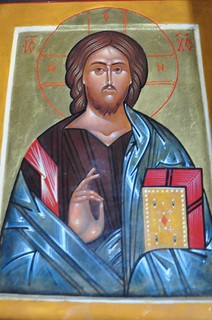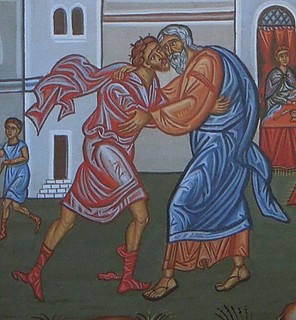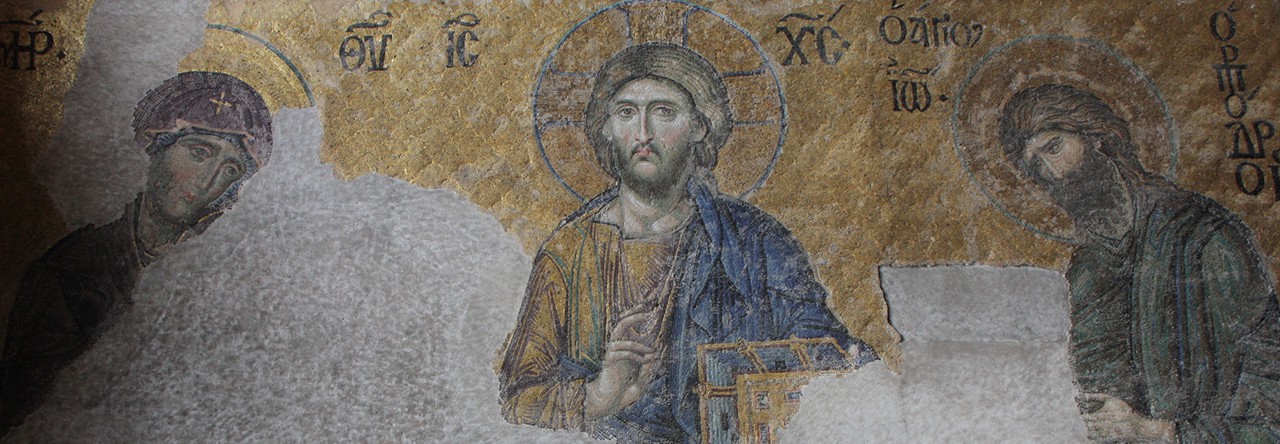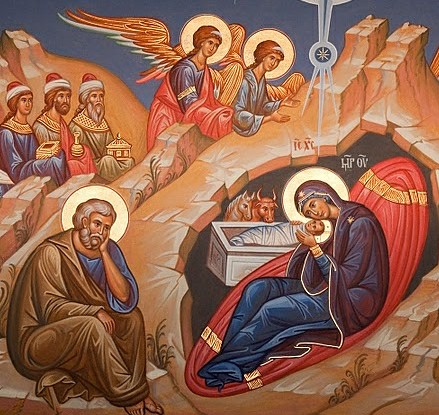 The 7th Sunday after Pascha falls between the Feasts of the Ascension of our Lord and Holy Pentecost. It commemorates the Fathers of the First Ecumenical Council, which was held in the Fourth Century. This Council certainly took up the question, “Who is Jesus Christ?” In knowing Christ, we come to understand what salvation means. For the early Christians Jesus is Truth (John 14:6), and so it was essential that the Church be able to express and communicate the Truth in order to evangelize the world. The Truth is the person of Jesus, while dogma and doctrine are the words and images we use to convey the truth to all people. Dogma and doctrine are thus exactly like the Scriptures in that they bear witness to Christ (John 5:39) – they bring us to the knowledge of the Truth who is Jesus.
The 7th Sunday after Pascha falls between the Feasts of the Ascension of our Lord and Holy Pentecost. It commemorates the Fathers of the First Ecumenical Council, which was held in the Fourth Century. This Council certainly took up the question, “Who is Jesus Christ?” In knowing Christ, we come to understand what salvation means. For the early Christians Jesus is Truth (John 14:6), and so it was essential that the Church be able to express and communicate the Truth in order to evangelize the world. The Truth is the person of Jesus, while dogma and doctrine are the words and images we use to convey the truth to all people. Dogma and doctrine are thus exactly like the Scriptures in that they bear witness to Christ (John 5:39) – they bring us to the knowledge of the Truth who is Jesus.
 “Early Christians approached Jesus Christ and the teaching about him (dogma) in the same way that Jews approached the law. Even as St. Paul taught that the person of Christ, and life in Christ, supercedes the law, his Epistles began to define who Christ is, how he is both divine and human, and how God exists eternally with his divine Son and his most holy Spirit. Even as the disciples and the first Christians were primarily concerned with praising God (Lk. 24:51-53) and spreading the faith, they were also concerned with discerning the truth about God and his Christ, and developing and widening the implications of that truth. It was the birth of Christian dogma. Christians sing about this dogma as the Jews sang about the law. […]
“Early Christians approached Jesus Christ and the teaching about him (dogma) in the same way that Jews approached the law. Even as St. Paul taught that the person of Christ, and life in Christ, supercedes the law, his Epistles began to define who Christ is, how he is both divine and human, and how God exists eternally with his divine Son and his most holy Spirit. Even as the disciples and the first Christians were primarily concerned with praising God (Lk. 24:51-53) and spreading the faith, they were also concerned with discerning the truth about God and his Christ, and developing and widening the implications of that truth. It was the birth of Christian dogma. Christians sing about this dogma as the Jews sang about the law. […]
Dogma (general truth) or dogmas (which are expressions of that truth) do not describe a code, a set of fixed and sterile rules. Rather, dogma describes and defines reality, what is. Dogmas give a true understanding of God, creation, and human personhood. They orient our lives. From dogma, we derive an understanding of reality, an ethos of life, and understanding of how to live, how to stand in relationship with God, the cosmos, the other, and the self. In other words, they tell us how to ‘do the truth’.” (Peter Bouteneff, Sweeter than Honey: Orthodox Thinking on Dogma and Truth, pps. 38-39)
We proclaim the Truth at every Divine Liturgy, and in that Liturgy we recognize the relationship between love and truth as well as between beauty and truth. Jaroslav Pelikan says:
 “And The Liturgy of Saint John Chrysostom introduces the chanting of the Nicene-Constantinopolitan Creed with the formula: ‘Let us love one another, that with one mind we may confess Father, Son, and Holy Spirit, the Trinity one in essence and undivided.’ It does not say. though, that is what reasonably might have been expected, ‘Let us confess Father, Son, and Holy Spirit, that we may love one another.’ Rather, to quote Bishop Kallistos Ware’s commentary on this portion of the Orthodox Liturgy: The Creed belongs only to those who live it. This exactly expresses the Orthodox attitude to Tradition. If we do not love one another, we cannot love God; and if we do not love God, we cannot make a true confession of faith and cannot enter into the inner spirit of Tradition, for there is no other way of knowing God than to love him.” (Orthodoxy and Western Culture, pg. 181)
“And The Liturgy of Saint John Chrysostom introduces the chanting of the Nicene-Constantinopolitan Creed with the formula: ‘Let us love one another, that with one mind we may confess Father, Son, and Holy Spirit, the Trinity one in essence and undivided.’ It does not say. though, that is what reasonably might have been expected, ‘Let us confess Father, Son, and Holy Spirit, that we may love one another.’ Rather, to quote Bishop Kallistos Ware’s commentary on this portion of the Orthodox Liturgy: The Creed belongs only to those who live it. This exactly expresses the Orthodox attitude to Tradition. If we do not love one another, we cannot love God; and if we do not love God, we cannot make a true confession of faith and cannot enter into the inner spirit of Tradition, for there is no other way of knowing God than to love him.” (Orthodoxy and Western Culture, pg. 181)
Truth, dogma and doctrine, are not just intellectual facts or a framework for understanding things. They are intimately connected with the Christian way of life – they are expressed in our love for God and for one another. They are helping us to enter into communion with the God who is love.
As George Washington Carver once observed:
“When you love something enough, it reveals itself to you.” (Being Bread by Stephen Muse, pg. 135)

